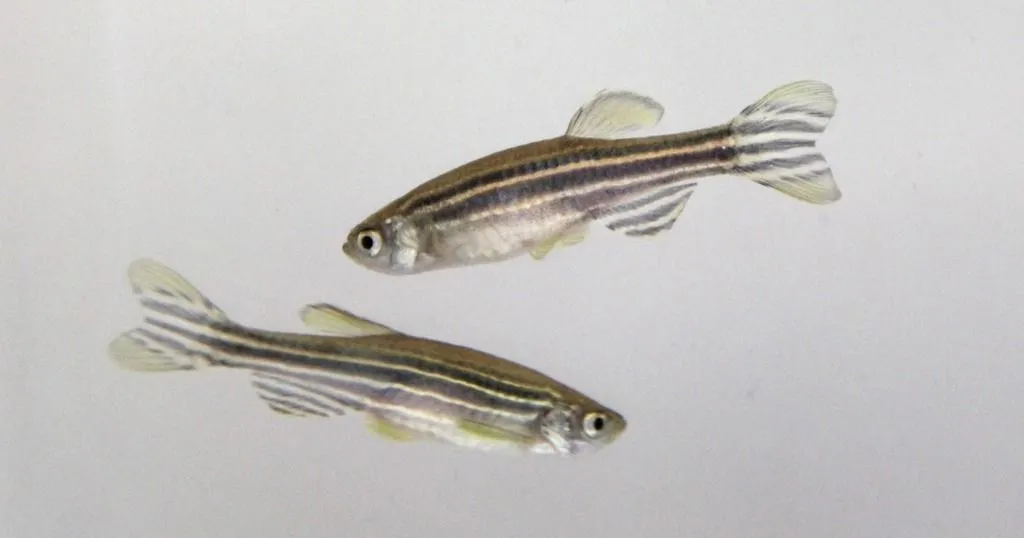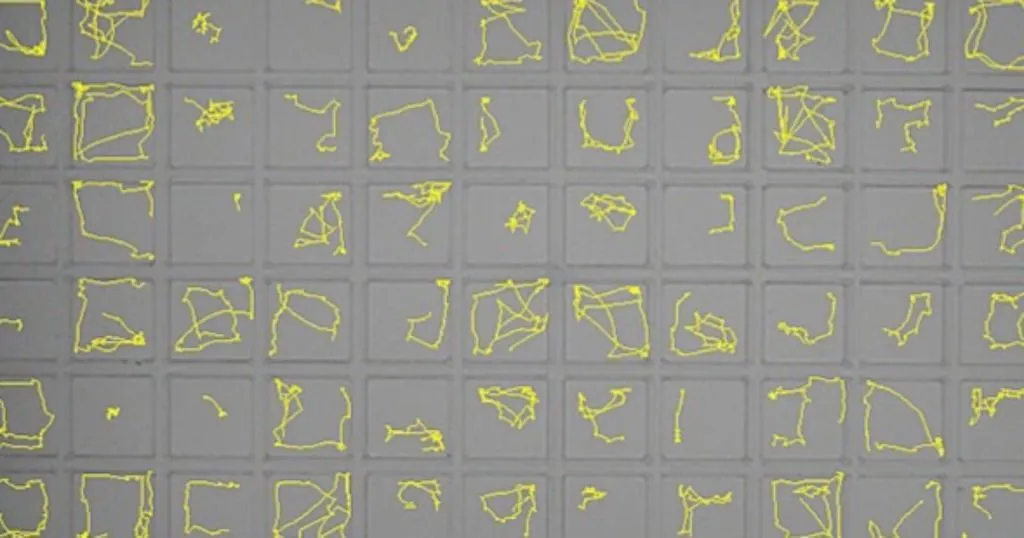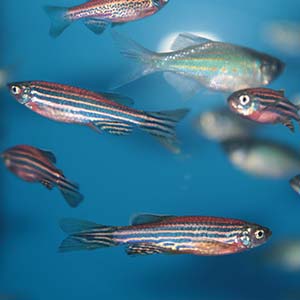Three ways to test hallucinogens on zebrafish

Hallucinogenic drugs (psychedelics) have a growing significance in biopsychiatric research. Zebrafish are a popular animal model and seem highly sensitive to various drugs of abuse.
Posted by
Published on
Tue 13 Mar. 2012
Topics
| EthoVision XT | Exploratory Behavior | Novel Tank Test | Open Field | Social Behavior Research | Video Tracking | Zebrafish |
Behavioral endpoints of zebrafish in the novel tank test, the open field test, and the shoaling behavior test
Hallucinogenic drugs (psychedelics) have a growing significance in biopsychiatric research. Zebrafish are a popular animal model and seem highly sensitive to various drugs of abuse. The Kalueff lab established these two facts and in a study described in Effects of hallucinogenic agents mescaline and phencyclidine on zebrafish behavior and physiology (Kyzar et al., 2012).
To shed some light on the poorly understood psychotropic effects of mescaline and phencyclidine (PCP), Kyzar et al. performed three behavioral tests, each with a naïve group of adult zebrafish. Fish were pretreated with mescaline, PCP, or no drugs at all (control group).
1. Measure behavior in the novel tank
In the novel tank test, behavior was viewed from the side of the trapezoidal tank. EthoVision XT video tracking was used to measure distance traveled, velocity, and durations of highly mobile and immobile states. As is common in the novel tank test, behavior related to the place in the tank (upper or lower half) was of interest. Therefore, latency to reach the top half, transitions, and total time spent in the top and bottom half were observed. Additionally, erratic behavior and freezing bouts were scored.
2. Measure open field behavior
The open field test was performed in a white plastic cylinder. EthoVision XT video tracking was used to record and measure distance traveled, average velocity, meandering, duration of movement, and the durations of highly mobile and immobile states. Additionally, the ability of mescaline and PCP to evoke rotations was scored manually.
3. Measure shoaling behavior
For the shoaling test, the novel tank was used once again. Screenshots were taken to measure distances between each fish and his nearest and farthest neighbor to calculate the average inter-fish distance per group. Additionally the number of fish in the bottom and in the top half of the tank was counted.
Anxiolytics and hyperactivity
Similar to rodent studies, mescaline and PCP seem to have both an anxiolytic and hyperactive effect. Mescaline also affects patterning in behavior, which is a possible hallucinogenic effect. While mescaline generally increases behavioral activity in the open field test with rodents, this study did not show the same effect in zebrafish. PCP showed a prominent effect on circling behavior in the open field test, possibly mimicking a psychotic-like state.
Contrary to studies on several other species, PCP did not affect social behavior in the shoaling test, whereas Mescaline did - it made the fish swim significantly closer together.
Opening up possibilities for high-throughput screening
This study, and other recent zebrafish data from the Kalueff lab on LSD, MDMA, and ketamine (see further reading below), supports the notion that tests with zebrafish can be used as specific screens for hallucinogenic drugs. The authors conclude: “The possibility of developing such high-throughput zebrafish-based screens not only offers an evolutionary perspective on drug-induced states, but also fosters further searches for new compounds with potential pro- and anti-hallucinogenic properties.”
Reference
Kyzar, E.J.; Collins, C.; Gaikwad, S.; Green, J.; Roth, A.; Monnig, L.; El-Ounsi, M.; Davis, A.; Freeman, A.; Capezio, N.; Stewart, A.M.; Kalueff, A.V. (2012). Effects of hallucinogenic agents mescaline and phencyclidine on zebrafish behavior and physiology. Progress in Neuro-Psychopharmacology & Biological Psychiatry, 37 (1), 194-202, doi:10.1016/j.pnpbp.2012.01.003.
Further reading
- Grossman, L.; Utterback, U.; Stewart, A.; Gaikwad, S.; Wong, K.; Elegante, M.; Elkhayat, S.; Tan, J.; Gilder, T.; Wu, N.; DiLeo, J.; Cachat, J.; Kalueff, A.V. (2010). Characterization of behavioral and endocrine effects of LSD on zebrafish. Behavioural Brain Research, 214, 277-284.
- Riehl, R.; Kyzar, E.; Allain, A.; Green, J.; Hook, M.; Monnig, L.; Rhymes, K.; Roth, A.; Pham, M.; Razavi, R.; DiLeo, J.; Gaikwad, S.; Hart, P.; Kalueff, A.V. (2011). Behavioral and physiological effects of acute ketamine exposure in adult zebrafish. Neurotoxicology and Teratology, 33, 658-667.
- Stewart, A.; Riehl, R.; Wong, K.; Green, J.; Cosgrove, J.; Vollmer, K.; Kyzar, E.; Hart, P.; Allain, A.; Cachat, J.; Gaikwad, S.; Hook, M.; Rhymes, K.; Newman, A.; Utterback, E.; Chang, L.; Kalueff, A.V. (2011). Behavioral effects of MDMA (‘ecstasy’) on adult zebrafish. Behavioural Pharmacology, 22, 275-280.
Related Posts
Zebrafish tracking to uncover subtle effects of embryonic alcohol exposure

How young zebrafish cope with stress

